I don’t mind admitting I’ve been dreading writing this post, not because I didn’t enjoy Petra or because I had nothing to write about, but because it’s such an extraordinary, unique place, it’s almost impossible to do it justice in a blog post.
How do you succinctly sum up one of the great wonders of the world in less than a thousand words?
There are so many captivating parts to the ancient city, it’s hard to know where to begin, what to include and what to leave out. But here goes…

The ancient Nabatean capital of Petra lay undiscovered for centuries, unknown to all bar a few local Arabs, until the Swiss explorer, Johann Ludwig Burckhardt, uncovered its secrets in 1812.
Since then, the mesmerising site has been celebrated as one of the great archaeological wonders of the world.

The vast city, nestled among the mountains and valleys of what is today south-west Jordan, was carved out of the rose-red rocks by the Nabatean people more than 2,000 years ago.
Home to countless temples and tombs, an amphitheatre and breathtaking scenery, this magical, atmospheric site still casts a spell to this day.
On our first day in Petra, we were up bright and early, and at the visitor centre (a modern complex filled with shops) by 8am so we could reach its most famous temple, The Treasury, by 9.15am to see it bathed in the morning light.
From the ticket office, we walked down the long, winding road to the start of the Siq, the narrow canyon in the Wadi Musa that leads to the ancient city.
Along the way, we passed a couple of Nabatean monuments, the Obelisk Tomb and the Bab el-Siq Triclinium.
The impressive tombs cut into the golden-red rock were merely a taste of the spectacular sights that awaited us further on.
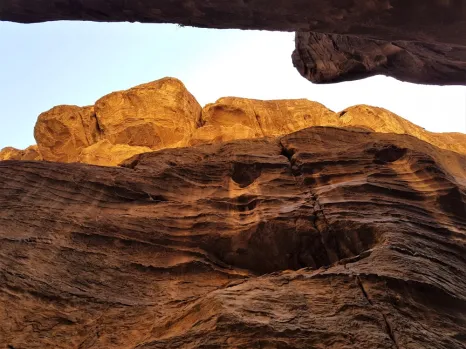
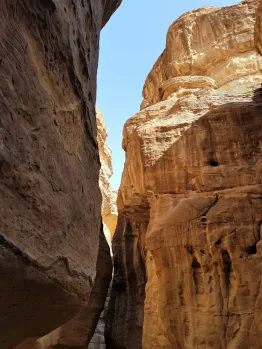
We soon reached the Siq, and as we began making our way through the 900m-long golden-red ravine, I was blown away by the natural beauty around us.
I couldn’t help but think of the photos I’d seen of the Grand Canyon or the iconic rock formations in Arizona and Utah.
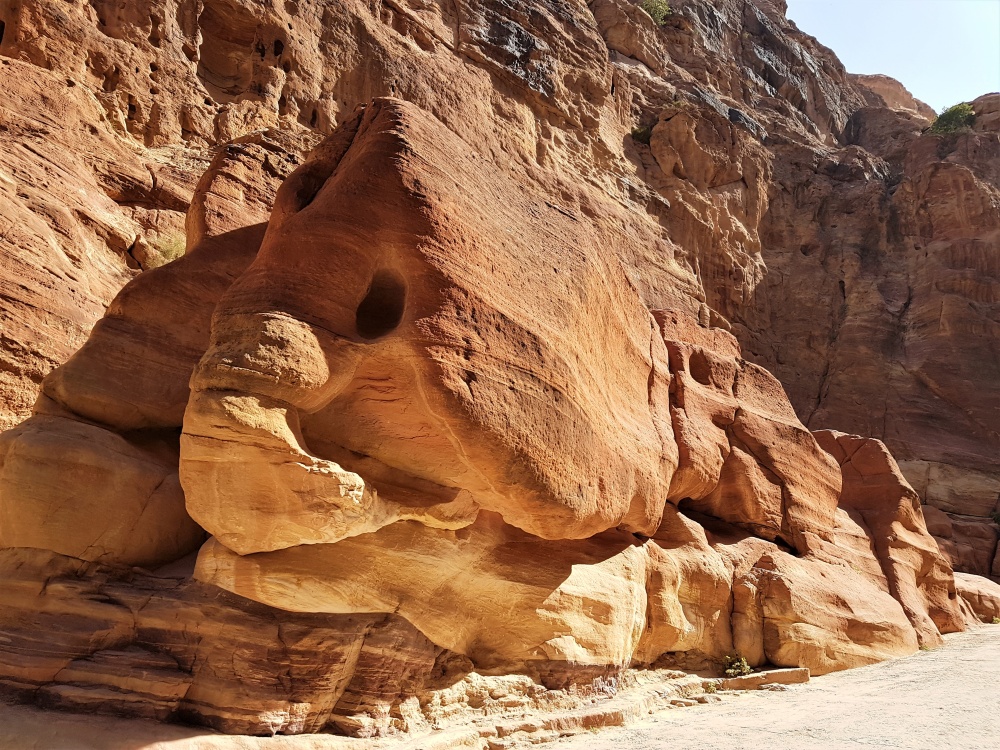
The geology was simply extraordinary and one of my favourite sights was the rock formation in the shape of an elephant (above).
I was also awe-struck by the faint outline of a man and his camels carved into the rock (below), which had sadly eroded over time.
We passed some of the original Nabatean paving, too, as well as a series of water channels cleverly cut into the rocks.

As we ventured deeper into the Siq, it became narrower and narrower, then as we neared the end, a shard of light appeared between the rocks and the magnificent form of the Treasury came into view.
The world-famous temple, which dates back to the 1st century BC, is a magnificent spectacle.
Its enormous ornamental facade, expertly carved into the rock, features many decorative symbols and touches, such as vines, eagles, gods and goddesses.
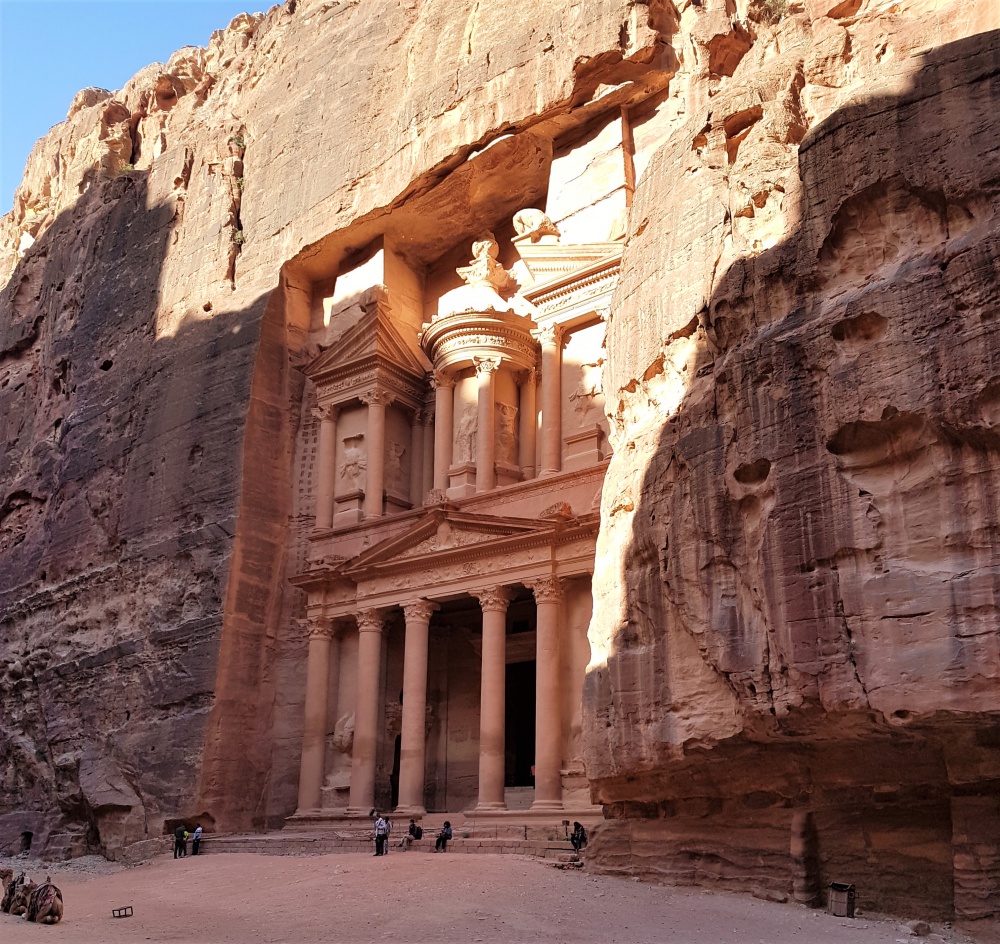
Around the sides of the Treasury, I noticed lots of small holes in the rock. The Nabateans drilled these holes into the rock and filled them with wood, which they then wet and left, so they expanded, causing the rock face to collapse and leaving them with a flat, sheer piece of rock for carving.
You can’t go inside the Treasury, but if you stand beside it and look down, you can see the entrance to the ancient tombs below.
It’s a breathtaking sight and we spent a good 20 minutes admiring the golden-red carving and taking lots of photos.
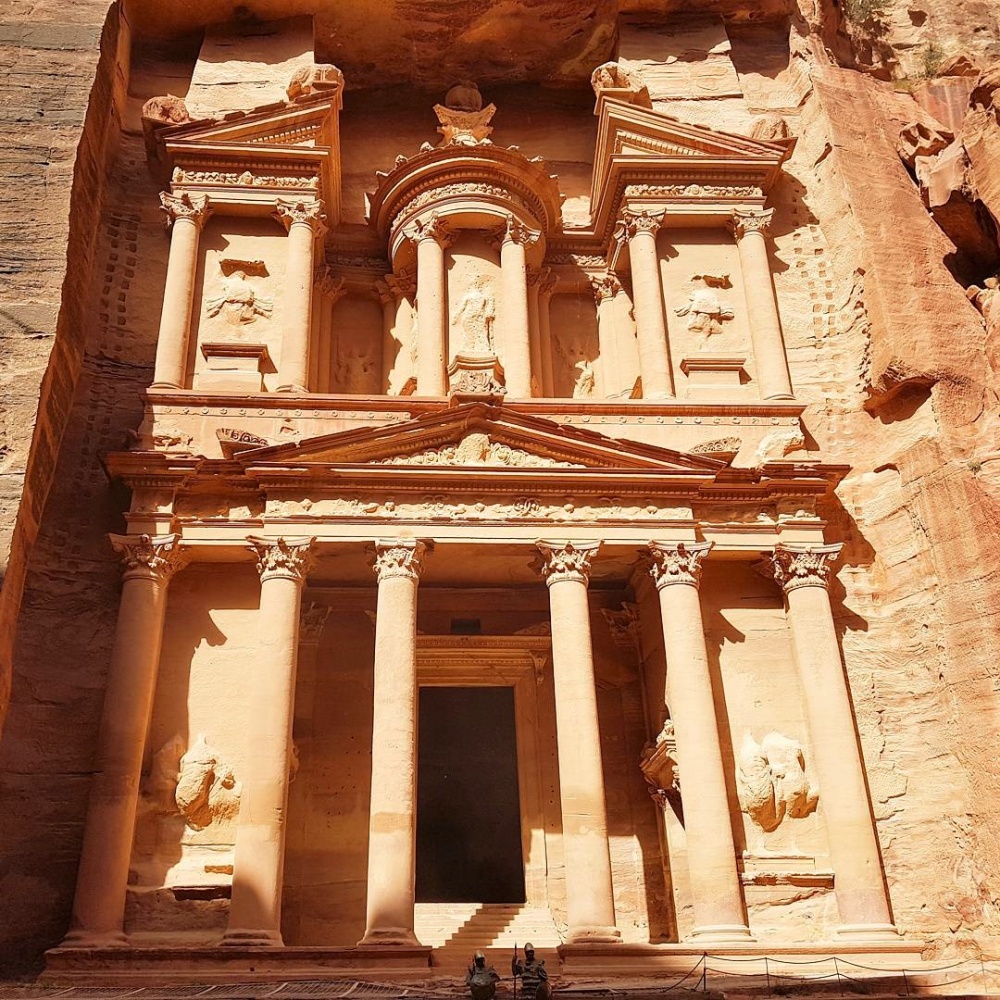
The Treasury is an extraordinary sight and quite unlike anything I’ve ever seen. Bathed in the golden hue of the early morning light, the temple almost glowed and it was easy to see why it’s one of the most iconic, most photographed places on earth.
It’s spectacular and the perfect introduction to the many wonders of Petra…






